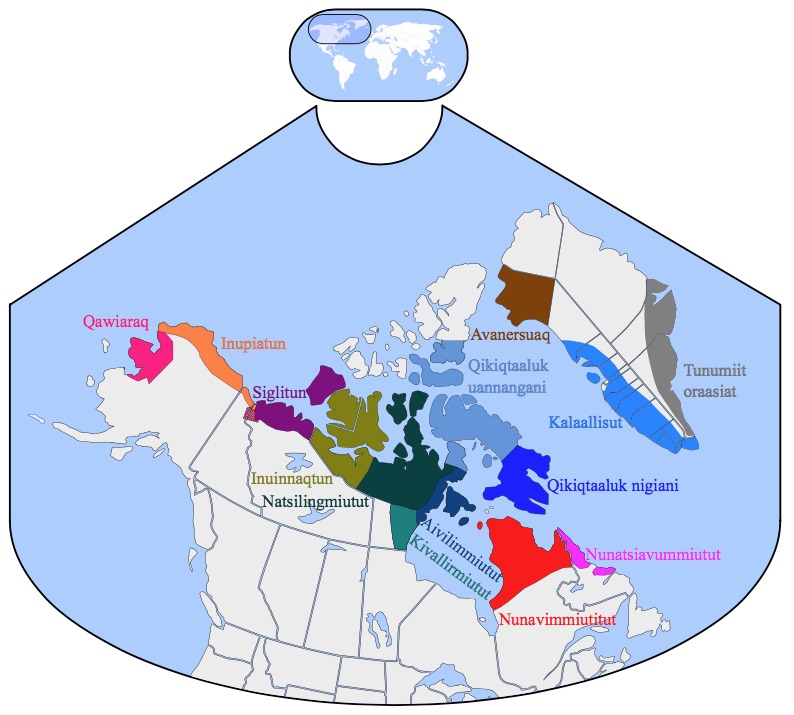DCHP-2
Inuktitut DCHP-2 (October 2016)
n. & adj. — Northern Canada, Aboriginal (Inuit)
any of the many related dialects spoken by the Inuit.
Type: 4. Culturally Significant — About 75% of the Inuit living in Canada, mostly from Nunavut or Quebec, report that they speak Inuktitut. Thus the language has special cultural significance here (see Tusaalanga reference). The name Inuktitut is often applied to the whole range of closely related Inuit dialects including those of Alaska and Greenland (see Image 1). The names of the various dialects and sub-dialects have varied over time and the spelling is not yet stable. In Labrador, the local dialect is called Inuttut, Inuttitut or Nunatsiavumiuttut. In Nunavik (northern Quebec), Inuktitut is used. In Nunavut, two dialects are now official: Inuktitut, written mainly in syllabics, and Inuinnaqtun (Copper Inuit), which uses a Roman orthography. Dialects of the western Arctic (e.g. in the Mackenzie Delta) are known as Inuvialuktun. These dialects form a continuum, that is, those found close together geographically are mutually intelligible. However, speakers of the dialects that are most distant geographically find it more difficult to understand each other.
In Europe, the Germanic and Slavic languages form continua across national territories; these varieties have been given distinctive names in the course of history (e.g. Dutch, German), which has contributed towards their (distinct) development. Similarly, some dialects of Inuktitut have their own names, although these are not often found in mainstream publications. Although some are given official recognition, their institutional backing is recent compared to that of those European dialects which became standardized national languages.See also: Inuit (meaning 3)
References:
- Tusaalanga reference "What is Inuktitut?" Accessed 27 Jul. 2016
Images:

Image 1: Dialects of Inuktitut, with dialect with labels in Inuujingajut, the Standard Roman alphabet for Inuktitut (Source: Wikimedia Commons. Map: Asybaris01)